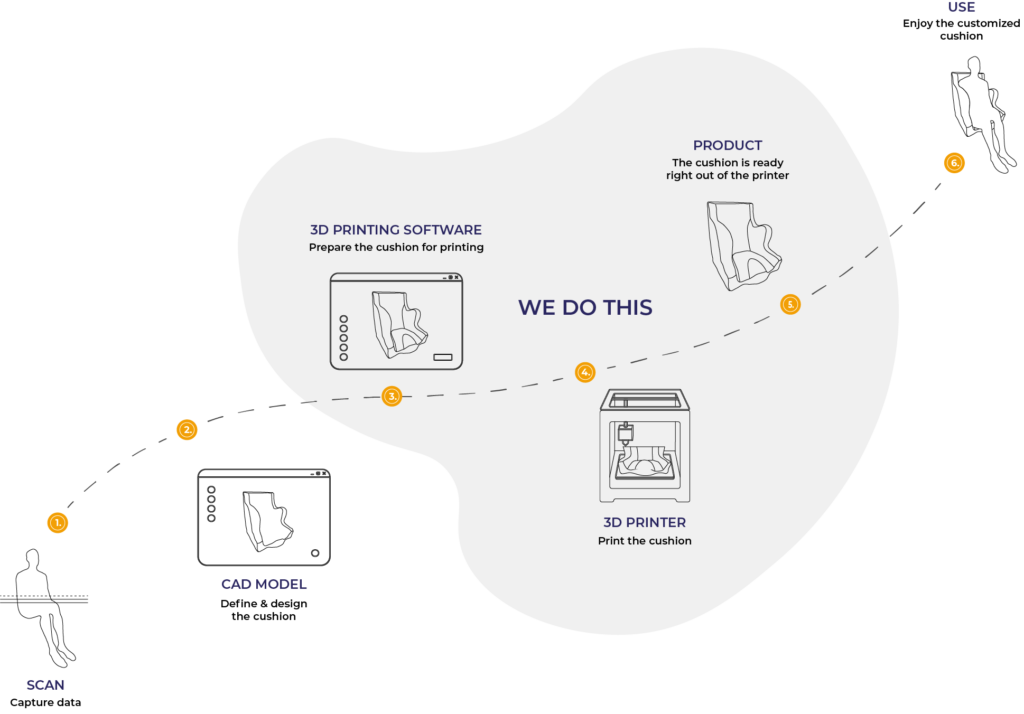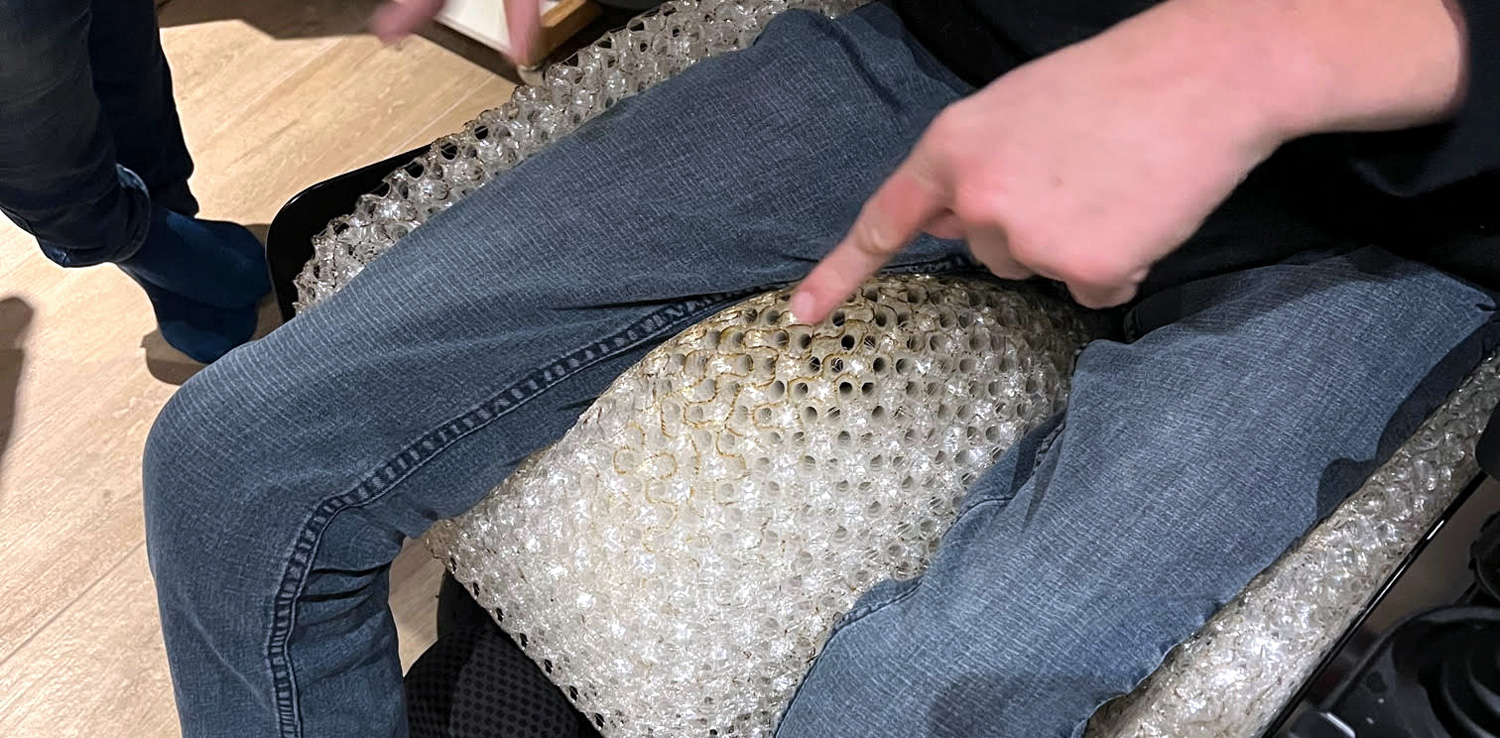The story of Bernd and his 3D-printed seat
In this article, you will meet our customer RAS-Team and their customer Bernd, who was their first patient to receive a 3D-printed custom seating aid. First, let me introduce Jan Warnke, an experienced orthopedic technician who has been working with seating systems for 23 years on the RAS-Team. He has covered various work areas and is currently focused on manufacturing special wheelchairs and seating systems for people with individual needs.
In this segment, the clients spend most of their waking hours in wheelchairs. They typically have special positioning needs that their seating aids must support without being a brace that holds them too tight. For this reason, the manufacturing process is done in very close cooperation, and Jan has a close relationship with the client and the client’s family. Through Jan, we will learn about Bernd and his 3D-printed seat and how it improves his quality of life.
Introducing Bernd
Jan has known Bernd and his family for 13 years. Initially, he was asked for a second opinion when another company built a seating solution. Later, Jan was asked to make a seating system for Bernd’s push wheelchair and, subsequently, his electric chair. Since then, they have worked together to seat Bernd, who uses a wheelchair for up to 13 hours daily, as comfortably as possible.
Bernd is 23 years old and an active young man who lives with his parents on a farm. He is cognitively intact but spends his day in a wheelchair because he has spasticity. Spasticity is characterized by increased muscle tone and stiffness, resulting in involuntary muscle contractions, movement difficulties, and discomfort. It is often associated with conditions such as cerebral palsy, multiple sclerosis, and spinal cord injury.
Bernd gets up early to work from 6:00 to 17:00 every day. When he gets home in the afternoon, he rests a bit before enjoying some active hours at the farm. He spends this time in a specially designed wheelchair, and there have been some concerns and challenges that Jan needs to find a solution for. The most critical issue is found underneath the traditional foam seat. Bernd sweats a lot, which causes problems in a traditional foam seat, leading to various skin conditions and discomfort. But Jan and Bernd’s parents didn’t realize how serious the problem was before they looked under the seat and discovered that it was black from fungus. Then they understood it was critical and a serious health risk.
A critical situation needs a solution
The situation is undoubtedly critical for Bernd. The most important mobility aid in his life is also causing him a lot of discomfort and pain. He also has excessive skin due to scarring after surgery in some areas, and his hips cause problems. These conditions are aggravated by the sweating issue. The first solution involved creating airflow in the seat by making channels in the foam, but it didn’t work in this case—the foam simply collapsed.
When Jan saw the seat of Programmable Foam® at Expolife 2023, he immediately realized it could be Bernd’s solution. The open gyroid structure allows for airflow and lets moisture pass through without being absorbed by the foam.
When he gets home, he talks to Bernd and his family, who agree it is worth trying. They also need the insurance company to approve it before it can be funded. Luckily, everyone is open to trying new technology, so after some negotiation, they can start building the 3D file for Bernd’s new 3D-printed seat.
Jan Warnke: “Programmable Foam® will overtake part of the crafting from traditional foam and improve many applications. I have so many ideas for improving seating aids with this technology, and we are just starting. First, how it handles moisture is good news for sweating patients and a great help for patients with incontinence issues. The moisture is transported away from the body to be cleaned, and the seat is easy to clean and dry.”
A digital workflow
The design of the model is straightforward. A vacuum bag is used for positioning, and when the designers are satisfied with its shape, it is scanned to become a 3D model. The next step is to import the 3D model into CAD software to do modulation and sculpting. The final model is combined with a frame scan to ensure they fit together.
Jan emphasizes the importance of having a good shape to work with, and the first steps are crucial to making this happen. Working with Programmable Foam® also means the entire build is done upfront, and all consideration is given to meet the patient’s needs.
The seat for Bernd is prepared with different hardness and softness zones to combine the need for relief and support. In short, the seating area has soft and extra-soft zones mixed with the general medium softness, and the outer area is hard.
The seat is printed by the 3D Print Service at Create it REAL and then shipped to the RAS-Team for the final fitting with the client.

Expected and unexpected outcome
Bernd is happy with the new seat. The airflow is excellent, and the sweating problem is solved.
The strategically placed softer zones have alleviated all the pain issues, and he can now sit all day without pain. Before, he had some special pillows for critical areas, which are no longer needed. This was our hope, but there was also an unexpected positive outcome.
Bernd experiences muscle spasms, which are part of his condition. Jan explains that these spasms are sought to be reduced by making dynamic systems that can give way when needed and reposition afterward. In the previous seating, the traditional foam would be pushed out of position, so whenever Bernd was done with his muscle spasms, he had to ask for help to get repositioned. The 3D-printed seat automatically repositions and takes back its shape, this eliminates the need for assistance. He also feels it guides his movements and helps him relax faster.
So, does Bernd have a better quality of life with his 3D-printed seat? According to Jan, there is no doubt about that.
Bernd is very expressive. Now that he can sit all day without pain, he feels that he has more support for his active lifestyle, which greatly enhances his quality of life.
Thank you to Bernd and his family for letting us share this case and to Jan at the RAS-Team for making it possible. If you have questions about the Programmable Foam® or our seating solutions, you can visit our website or schedule a meeting.



